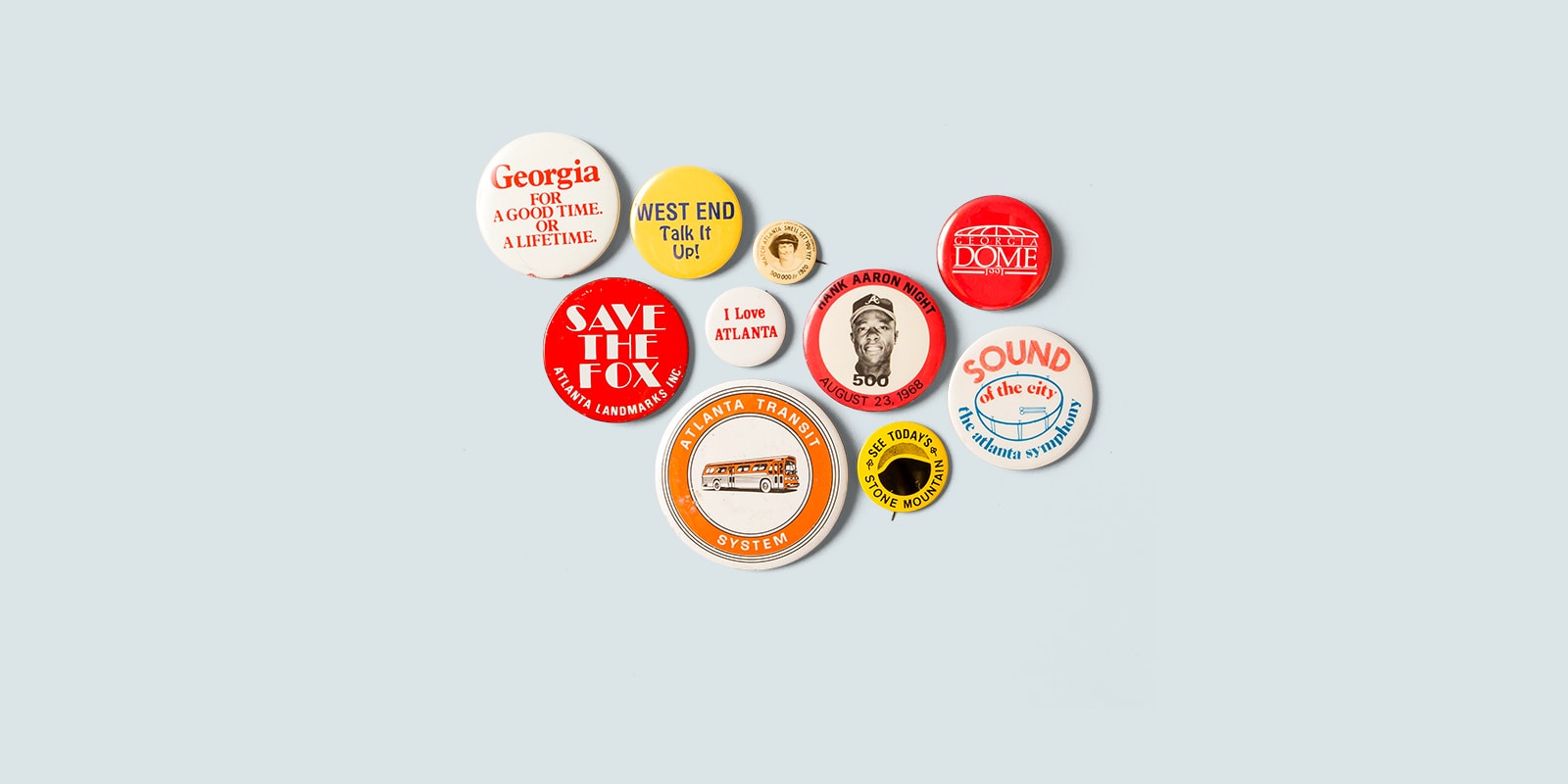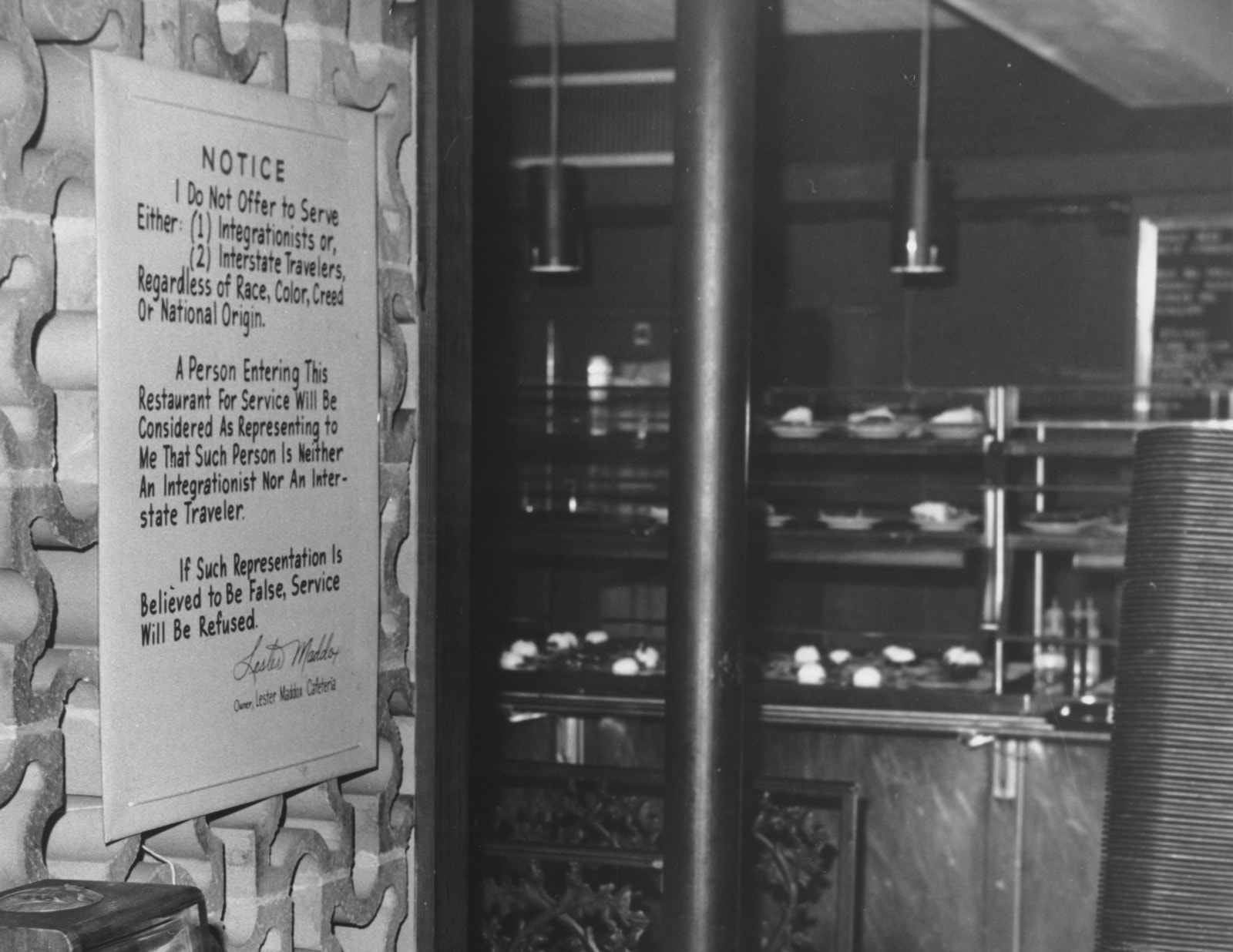Atlanta in 50 Objects
A pink pig and a renegade cow. A movie prop and a Coke bottle. A Pulitzer Prize–winning book and a Nobel Prize–winning icon.
How do you tell the story of Atlanta in 50 objects? We decided the best experts were Atlantans themselves—residents who cheer the Braves and rue I–285 rush-hour traffic, who understand how Civil War losses and Civil Rights victories together helped forge the city’s unique identity. Atlanta History Center asked the public to submit what objects they think best represent their town. The parameters were broad: an object could also be a person, a place, an institution, or an idea. After receiving hundreds of submissions, History Center staff assembled a collection of fifty pieces that represent the themes identified by the public. In addition to items from our own collections, we have partnered with many local institutions and individuals to gather artifacts from around the city to tell this community–driven story.


Lester Maddox
Future Georgia Governor Lester Maddox opened the Pickrick Restaurant in 1947 on the edge of the Georgia Tech campus.
Specializing in fried chicken, the restaurant grew in popularity; by 1956, it seated 400 customers.
In 1949, Maddox began to promote his segregationist political ideology in “Pickrick Says” restaurant advertisements published in the Atlanta Journal. In April 1964, several African Americans tried to enter the restaurant and were threatened off the property by Maddox with “Pickrick drumsticks,” a euphemism for wooden axe handles.
In July 1964, the day after President Lyndon Johnson signed the Civil Rights Act of 1964, three African American students tried to enter the Pickrick and test the new law—and Maddox escorted them off his property, pistol in hand. The event gained national attention and Maddox’s name became widely recognized. He took his cause to the courts and lost. Rather than integrate the Pickrick, Maddox closed his business.

Entrance to the Pickrick Restaurant, 1964. Kenan Research Center at Atlanta History Center